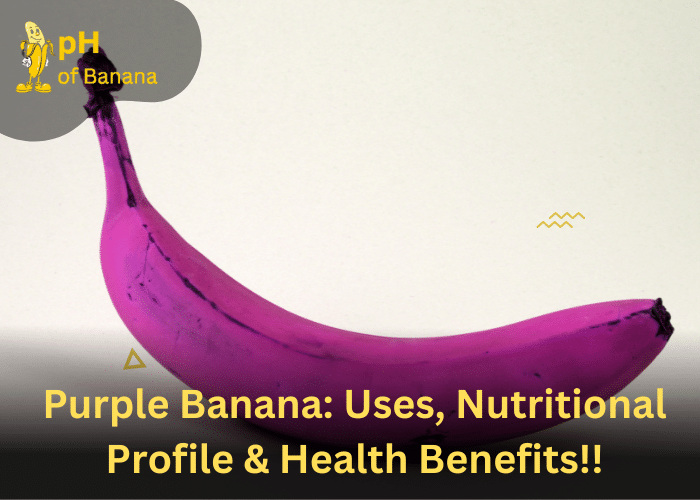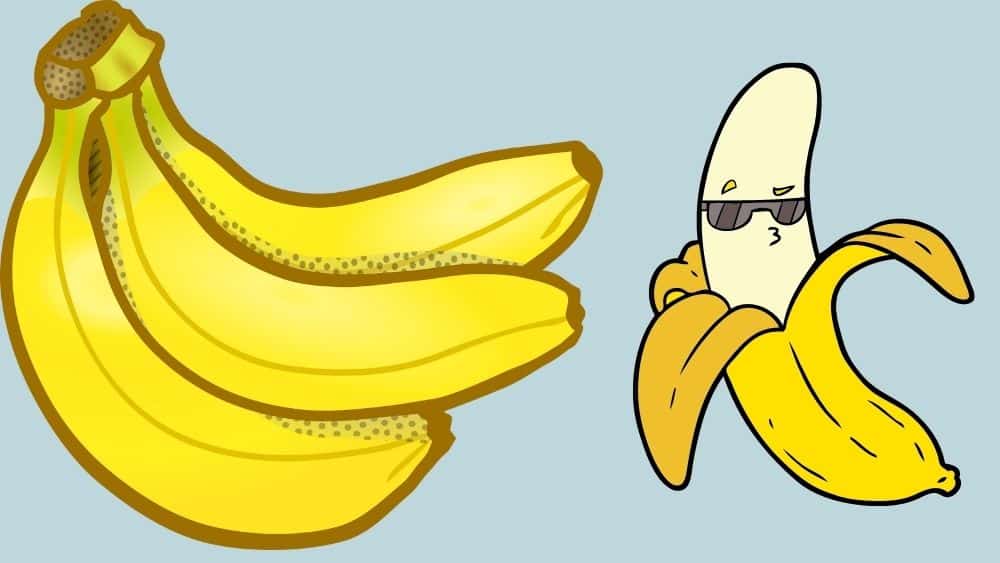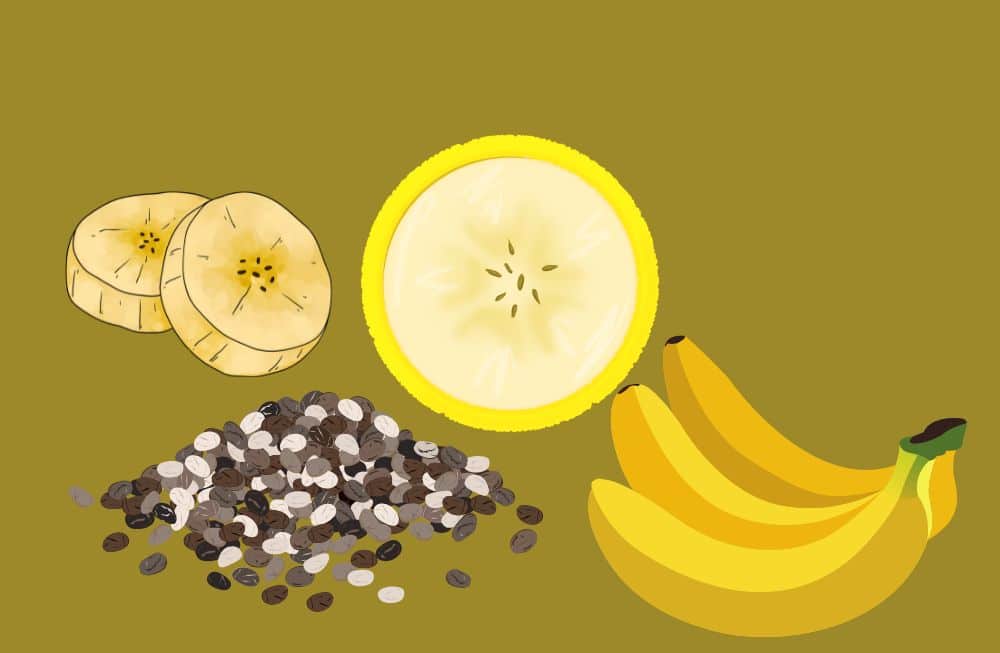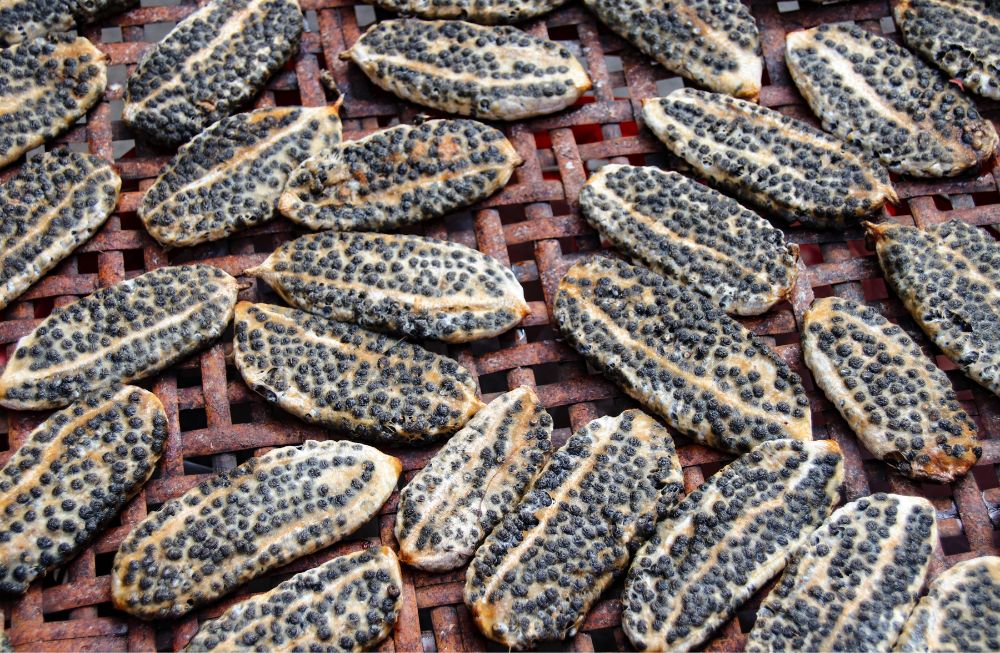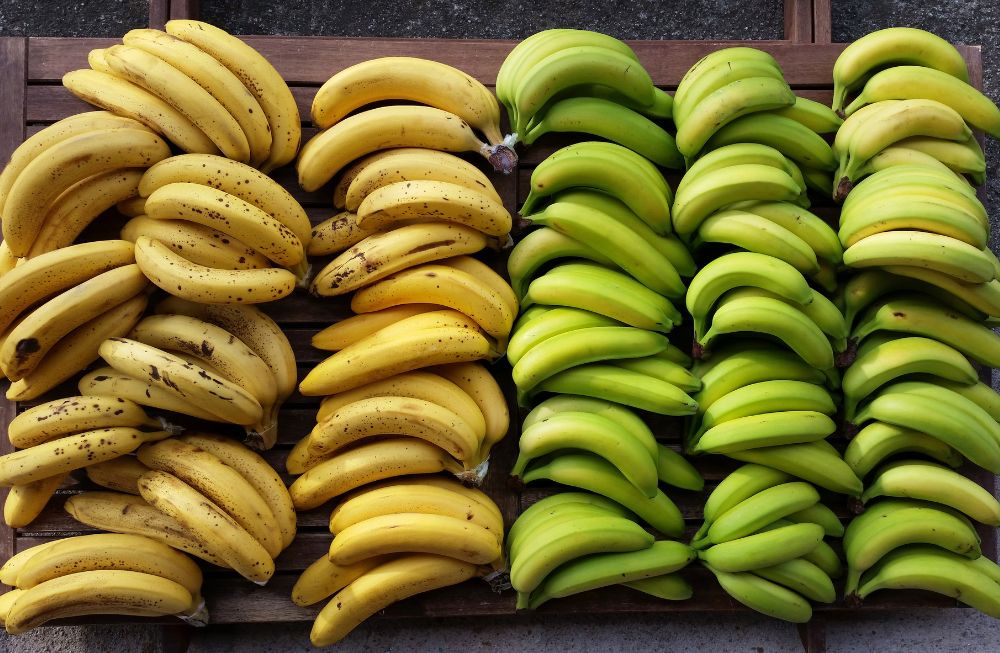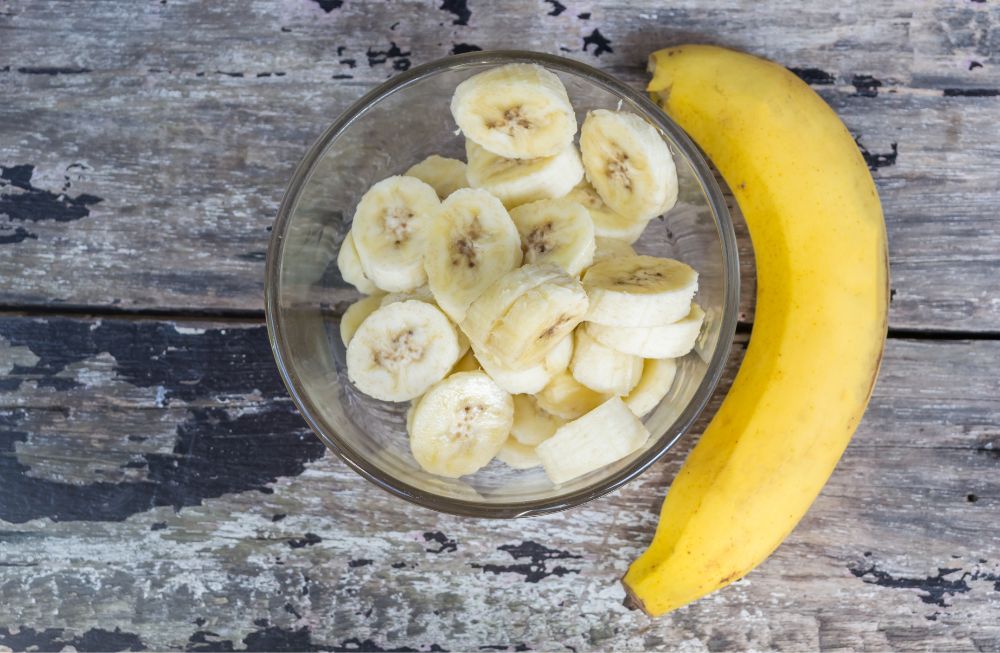Have you ever imagined a very stunning purple banana color in your all-time favorite banana fruit? Yes, that exists! Among more than 50 species of wild bananas, Musa acuminata and Musa balbisiana are the major ones. Purple banana is basically the hybrid of these two species in the genus Musa of the Musaceae family. Purple bananas are not only amazing in looking but also incredibly delicious to taste and beneficial for our human body.
They are a good source of many nutrients, including antioxidants, fibers, and vitamin C, enough to fulfill all the health needs starting from metabolism and immune & digestive systems and even improve heart conditions as well.
Read on to find out detailed information about the purple & prince banana!!
What Are Purple Bananas?
As earlier mentioned, there are over 50 wild banana species that are believed to exist, available in different sizes and colors. Of them, the purple banana is one. Purple bananas originated in Southeast Asia. Also, purple bananas are regarded most as baked red bananas, as red one changes turn into purple through a chemical reaction process while baking.
Purple Bananas are a very beautiful variation in the wild banana world. They are botanically known as Musa ornata which is native to south-east Asia. Even it is widely cultivated in Bangladesh, Burma, and even India as well.
They have reddish-purple skin and are almost similar to the regular cultivated yellow banana in taste. But you will be ensured far more health benefits than the yellow banana from the purple ones. Also, they are quite related to the Musa acuminate or red banana.
More clearly to say, the bright red color of Musa acuminata turns into purple after full ripening. Even if you are baking it with a few drops of acid, the red color changes itself into purple.
What Is Purple Banana Called?
Purple bananas are the hybrids and polyploids of two wild, seeded banana species, Musa acuminata and Musa balbisiana under the Musaceae family. Scientifically, they are known as Musa ornata but are originally famous as the “red banana” or the “Dacca” around the world. Also due to their ornamental value, people call these purple bananas flowery or ornamental bananas.
Purple bananas are listed as one of the most beautiful bananas in the wild banana species. Due to its unique color and flavor, this banana is famous worldwide. It is incredible in looking, especially the flower-like appearance.
Generally, the flowers of these bananas are very large, white, and almost similar to an orchid. Thus people in many parts of the world are known this gorgeous fruit as a flowery or ornamental banana as well.
Why Is Purple Banana Purple?
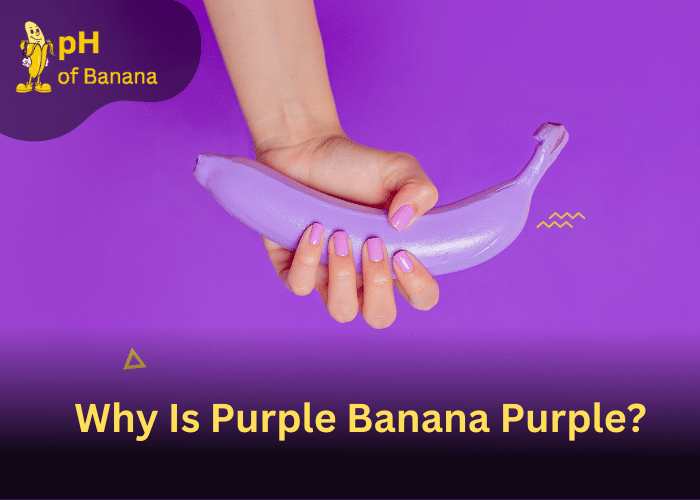
Generally, fruits get their coloration from phytochemicals and natural bioactive compounds. Before ripening, the purple banana has an unusual blue-tinged peel from its natural wax coating. After fully ripened, they get their fully vibrant purple color. Secondly, purple bananas are highly related to red bananas. Red bananas tend to change their color to purple through heat chemical processing.
Don’t be puzzled! Let’s clear the scientific reason behind this change!
There are a wide variety of wild bananas with different colors and sizes. Of them, red bananas are quite common to us that are also originally from Southeast Asia. Naturally, they have reddish-purple skin with soft & light pink colored flesh inside.
When you are cooking this red banana, you will see the magic! Gradually it is changing the colors to purple. Basically, it is a simple chemical reaction. The red banana is highly rich in potassium, magnesium, fiber and many other nutrients. While heating, the potassium starts reacting with the sugar inside. Initially, it turns pink color.
Then apply a few drops of a little gallic acid and it will change into a dramatic shade of purple. But there will no less change in benefits, configuration or even in sweetness. You can conveniently eat this banana without any safety concerns.
Where Does Purple Banana Come From?
Purple Bananas are a subgroup of two bananas that mainly comes from lowland areas with high temperatures and humidity. Originally they come from southeast Asia. Also, it is widely popular in Bangladesh, Burma, and India as well. Even due to its amazing taste and ornamental value, it is cultivated commercially in many parts of the world.
Due to the need for different weather and climate, different types of wild bananas tend to be found in various parts of the world. If it is purple bananas, the plants of this banana can grow well in humid, tropical regions.
Southeast Asia is the preferable place for it where there are high temperatures and rainfall. Thus you will find the purple bananas the most. Also, it is commonly found in Bangladesh and Burma. Plus, the plant is native to the humid forests of Assam (India).
How Purple Banana Is From Inside?
Unlike regular yellow bananas, Purple banana has almost similar in size but have reddish-purple skin. There is creamy soft white flesh inside that is firm, and embedded with large, hard & yellow seeds overall. Generally, the flesh is sweet and creamy to taste and the hard seeds may bother you if you are a gastrointestinal patient and not used to chewing the stony seeds.
Bananas are in the range of the most delicious fruits and are quite familiar worldwide due to their mouthwatering creamy sweetness. Apart from being eaten as fruit, the banana can be used in making various delicious drinks, smoothies and of course desserts as well.
Even the raw banana is used in many curried dishes by mixing with rice, roasted meat, vegetables, and whatever you are preferring.
Well! These are the facts about our regular yellow banana. But the term may surprise you that wild bananas can also be added to savoury dishes, drinks and in making many desserts. Purple banana is such an edible banana, having full frim white flesh inside that is amazingly sweet in taste.
But unlike other wild bananas, it is seeded inside. You will find numerous yellow seeds that may be easier to chew. But people who have digestive and gastrointestinal might seem challenging to eat purple bananas with seeds.
How To Grow Purple Bananas?
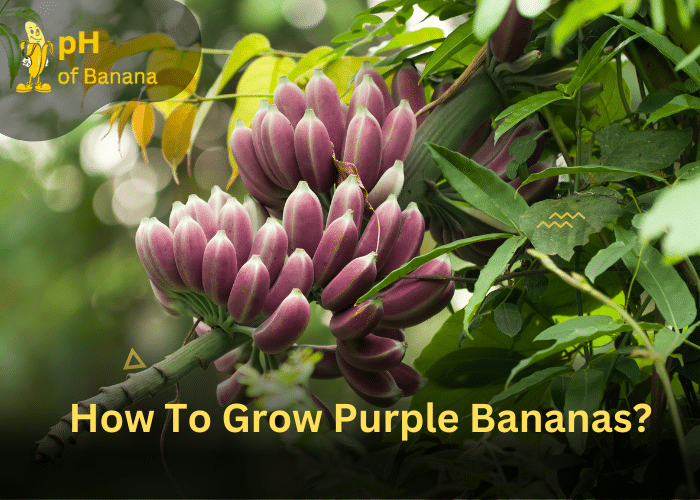
It is easy to grow wild bananas like purple bananas with lush foliage in your location only if you can ensure the ultimate tropical garden appearance for the plants. First off, you have to ensure healthy seed germination as it is a crucial part of developing a new plant. Then concentrate on other factors as well like soil type, sunlight, watering amount and most importantly maintaining a proper temperature.
Not enough information right? No worry! Let’s walk you through step-by-step procedures on how you will grow purple bananas in your home garden effectively:
Step #1: At first, make preparation for seed germination. Collect the healthier purple banana seeds. Then take a bowl of warm water and put the seed there. Let the seed soak in the warm water for about 2-3 days to break the seed dormancy.
It will soften the seed coat and enable the embryo to sprout more quickly. Meanis check and change the water when it cools down.
Step #2: When the seeds germinate, it is time to sow them in the soil. To do this, prepare the soil for bananas. Take a large tray or small pots and fill them with soil. Make sure the soil is suitable and contains enough organic matter. It should be well-depth, fertile, and most importantly moisture retentive.
Step #3: Sow seeds up to 1/4 inches deep in the tray. When done, it is time to find the proper zone to place the tray.
If you are sowing seeds outdoors, you have to make sure that the soil temperature is above 68 degrees Fahrenheit. Also, if you are living in over-winter areas, you have to manage a thick mulch so that the cold temperatures can not affect the in-ground rhizomes.
Step #4: In the case of planting indoors, choose the location where the sun is often best. Keep note that, purple banana tress will require requires 80-100% sunlight. Also, an indoor soil needs up to 60 degrees Fahrenheit.
Step #5: Water the tray regularly to keep the soil moist but donlt make it over-hydrated as it can cause the seed to rot.
Are Purple Bananas Natural?
Yes! There is no doubt to say that purple bananas are natural and their origin is placed in humid, tropical regions of southeast Asia like Bangladesh, India and Barma. Even due to having large, beautiful natural flowers, these bananas are commonly known as ornamental bananas.
Generally, bananas are in yellow color. So when you are seeing the different vibrant color in the same fruits like purple banana, being surprised is quite obvious. Many of you may consider it unnatural and sometimes ornamental. Yes, purple banana has ornamental value but is a natural growing banana fruiting herb that is widely found and familiar worldwide.
Most wild bananas tend to grow well in Southeast Asian countries. They are a bit different from regular bananas. Typically, the wild bananas are full-packed with bullet-like seeds covered with soft creamy flesh.
But that is nothing trouble to eat if you get used to it. most of the ones even taste more flavorful than the yellow ones. However, it is important to note that, unlike other wild bananas, purple bananas are natural and edible fruit, nothing to get surprised seeing the vibrant reddish-purple skin.
How Long Does It Take Purple Banana Seeds To Germinate?
Fruit seed germination is slow and erratic and it may take up to 2-3 weeks or even go several months to complete the germination. You can expect to wait about 3-6 months to fully germinate the purple banana seeds only if you can ensure a healthy environment, watering and temperature. Along with this, by applying hot water seed treatment, you will get a faster result than the untreated ones.
Among the most critical stages in the growth of fruits and vegetable is seed germination. After ensuring healthy and proper seed germination, only then you will be to grow the new plant. The wild bananas including purple ones are not out of this row.
The germination time highly depends on environmental conditions like light, warmth and moisture. Usually, it takes at least a couple of weeks or a couple of months. If it is about wild bananas, they tend to take much longer time than regular fruiting. It may go up to six months as well.
Well! But by applying a few tricks, you can give the overall process good motions by yourself. For this instance, you may do the followings:
- First, you can pre-soak your seeds before sowing. Prepare the seeds and soak them in hot water for 24-48 hours.
If you feel harder to germinate seeds outside, no matter you can continue this indoors as well. Use a large tray for this instance, and plant the seeds there.
- Basically, it will help you completely control the care of the germination as well as protect the plants during their most vulnerable period.
- Don’t miss to monitor your seeds regularly. Monitor soil conditions and also ensure that plants are staying within ideal temperatures. Plus keep them well-watered until they germinate
Is Purple Banana Good For Health?

Yes! There is no chance of denying the fact that the purple banana is impressively best for health. They are a good source of all essential nutrients, antioxidants and fiber content. All these are enough to manage blood pressure, improve the digestive system & promote all the needed heart health benefits.
Let’s break down each of the points in detail:
#1- Lower the blood pressure
Bananas including almost all types of wild bananas are effective in controlling blood pressure. They contain potassium that can help manage hypertension. Basically, potassium reduces the effects of sodium and control blood pressure by alleviating the tension of blood vessels’ wall.
#2- Reduce The Risk Of Heart Disease
Purple bananas are quite good for heart health as well. It reduces the chances of any heart disease and degenerative illnesses. They contain folate and various type of antioxidants especially vitamin C which supports heart health.
You will get up to 3 grams of fiber and 9% of the RDI vitamin from a small purple-reddish banana. Medical research says that people who maintain high-fiber food in their diet have a lower risk of cardiovascular disease.
#3- Supports Immune System
Purple bananas are rich in immune-system boosting vitamins. They contain 33% of the RDI for vitamin B6 and 9% of the RDIs for vitamins C. These are far helpful for improving the immune system of the human body. The enriched essential antioxidants like vitamin C and B6 will strengthen the cells of the immune system and through which it boosts immunity.
#4- Improve The Digestive System
Wild bananas are low-fructose fruit that has a high amount of fiber. This high dietary fiber content stimulates the growth of good bacteria in the gut. In the gut, fibers are fermented by these beneficial bacteria, formed from the fatty acid chain that improves the gut health and digestive system as well.
Can We Eat Purple Banana On An Empty Stomach?
No! You can’t!! All wild bananas along with purple bananas are highly rich in magnesium which negatively affects the metabolism and digestive system when you are consuming it on an empty stomach. Also, it is harmful to health as well through creating disruption between magnesium and calcium in the blood. So, we should avoid eating a banana as the first diet of the day.
Bananas are touted to be an excellent source for maintaining a healthy body. But it acts almost similar to poison on the empty stomach. Let’s make all the confusion clear that you shouldn’t eat bananas on empty stomach:
- Like other regular and wild bananas, purple bananas contain a high amount of manganese, calcium, and potassium, meaning all the acidic properties.
Acidic diets are enough to slow down the digestive system. Thus you can take in the morning paring with the food but not on empty stomach. It may lead to acidity or even various aggravated gastric problems.
- Secondly, the high magnesium diet imbalances the calcium and magnesium content in the blood. This imbalance greatly affects the cardiovascular system, which means there is a higher chance of causing heart problems as well if you eat bananas on an empty stomach.
Are Bananas Originally Purple?
Yes! There are a variety of wild bananas, cultivated around the tropical land. They tend to form different vibrant colors naturally like red, blue, pink or purple. Purple bananas are in the range of wild bananas, having reddish-purple color. They are almost similar to red bananas but taste more sweet and creamy with all the raspberry highlights. Originally purple bananas are native to the southeast Asian regions from where the tropical climate is far more favourable to grow these bananas maintaining color and taste.
Is Royal Purple Banana Edible?
Yes! Eating Royal purple bananas is completely safe and secure. Even you will enjoy more sweetness and creaminess of this gorgeous wild purple banana variation. Like other species, the white soft flesh is full of large & hard seeds but that is not the fact of trouble to eat as long as you have no serious gastrointestinal problems.
Purple bananas or Musa Ornanta are certainly one of the most beautiful wild banana species of the Musaceae family. Basically, the purple banana tress is regarded to be a beautiful and distinctive plant, highly known as an ornamental plant for its handsome foliage.
It has large brightly colored flowers and yellow leave with greenish veins that are enough to add an elegancy look to the plant. When the flowers diminish, it turns into a very stunning purple banana fruiting.
Seeing this spectacular banana with a bright pinkish-purple skin view, certainly many of us wish to eat this. But the query may start is this wild is safe to eat.
Yes! You can! The purple banana is edible with creamy white flesh but you will get numerous black seeds running throughout. The seeds are also chewable and safe to eat as they do not contain any toxic substances. But to hardness and large size, it may be slightly troublesome for gastrointestinal patients.
FAQs
What Do Purple Bananas Taste Like?
Usually, purple bananas have soft and sweet flavored flesh, covered with reddish-purple skin. That is quite similar to regular cultivated yellow bananas mixed with raspberries taste.
Are Purple Bananas Real?
Yes! Purple bananas are real! They are originally placed in tropical regions. Even the Purple banana tree or Musa Ornata is listed as one of the largest herbaceous plants and grown as an ornamental plant. It has brightly colored flowers and yellowish leaves with green veins. Along with edible fruits, purple bananas have the most ornamental value due to having stunning foliage in the plants.
Where To Find Purple Banana?
Purple bananas are widely grown throughout the humid forests of tropical regions like southeast countries. Also, it can be found in India, Barma, India including others parts of South East Asia. Even there are varieties of online stores available from where you can order the purple banana. If you are buying from Amazon, you would expect to pay $4 per packet.
In Closing!
Still, being mysterious about a purple banana? Hopefully Not! Our comprehensive discussion is enough to quench any of your queries regarding Musa Ornata. They are in the range of beautiful bananas that are good to see and quite flavorful to taste. From the reviews, it is like a cavendish banana but a hybrid of two bananas.
Apart from being as fruit, you can use them to prepare a wide range of dishes, especially banana-based smoothies that are truly amazing! Even it has able to provide all the health benefits that our body needs. So, it will be worth trying this flowery banana at least once in life! I hope you find the article “Purple Banana: Uses, Nutritional Profile & Health Benefits!!” helpful.

